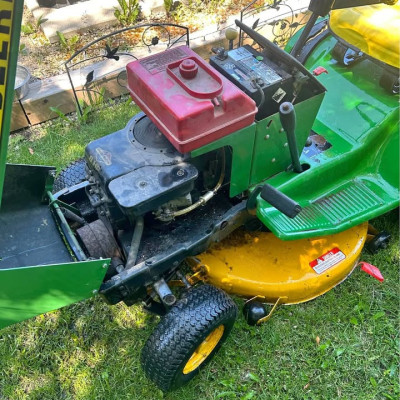Ultimate Guide to Starting Your Fall Garden: Top Vegetables to Grow!
As the summer heat fades and cooler temperatures approach, it's the perfect time to start planning your fall garden. Fall gardening offers the opportunity to grow a variety of delicious and nutritious vegetables that thrive in the milder weather. Whether you're a seasoned gardener or a beginner, this guide will help you get started with the best fall vegetables to grow for a bountiful harvest.
Why Fall Gardening?
Fall gardening has many advantages:
Cooler Weather: Many vegetables thrive in cooler temperatures, making fall an ideal time for gardening.
Extended Growing Season: By planting in the fall, you can extend your gardening season and enjoy fresh produce into the winter months.
Pest Reduction: Cooler weather often means fewer pests, resulting in healthier plants.
Top Vegetables to Grow in Your Fall Garden
Spinach
Why Grow It: Spinach grows quickly and is packed with vitamins and minerals.
Planting Tips: Sow seeds directly into the soil 4-6 weeks before the first frost. Spinach prefers well-drained soil and partial shade.
Lettuce
Why Grow It: Lettuce is easy to grow and can be harvested multiple times.
Planting Tips: Sow seeds every two weeks for a continuous harvest. Lettuce thrives in cool, moist soil.
Kale
Why Grow It: Kale is a nutrient-dense green that becomes sweeter after a frost.
Planting Tips: Start seeds indoors and transplant them 6-8 weeks before the first frost. Kale prefers full sun but can tolerate partial shade.
Carrots
Why Grow It: Carrots are hardy root vegetables that store well.
Planting Tips: Sow seeds directly into the soil, ensuring the soil is loose and free of stones. Carrots prefer full sun.
Broccoli
Why Grow It: Broccoli is a cool-weather crop that is high in vitamins and minerals.
Planting Tips: Start seeds indoors and transplant them 4-6 weeks before the first frost. Broccoli needs full sun and rich soil.
Beets
Why Grow It: Beets provide both edible roots and greens.
Planting Tips: Sow seeds directly into the soil 6-8 weeks before the first frost. Beets prefer well-drained soil and full sun.
Radishes
Why Grow It: Radishes are fast-growing and perfect for fall planting.
Planting Tips: Sow seeds directly into the soil every two weeks for a continuous harvest. Radishes grow best in full sun.
Brussels Sprouts
Why Grow It: Brussels sprouts develop a sweeter flavor after exposure to frost.
Planting Tips: Start seeds indoors and transplant them 6-8 weeks before the first frost. They prefer full sun and fertile soil.
Swiss Chard
Why Grow It: Swiss chard is a versatile green that can be harvested throughout the fall.
Planting Tips: Sow seeds directly into the soil 6-8 weeks before the first frost. Swiss chard grows well in full sun or partial shade.
Turnips
Why Grow It: Turnips are fast-growing root vegetables that are easy to grow.
Planting Tips: Sow seeds directly into the soil 6-8 weeks before the first frost. Turnips prefer full sun and well-drained soil.
Tips for a Successful Fall Garden
Soil Preparation: Enrich your soil with compost or organic matter to ensure your plants have the nutrients they need.
Watering: Keep your fall garden well-watered, especially during dry spells. Consistent moisture is key to healthy plants.
Frost Protection: Be prepared to protect your plants from early frosts with row covers or cold frames.
Succession Planting: For a continuous harvest, practice succession planting by sowing new seeds every few weeks.
Starting a fall garden is a rewarding way to extend your growing season and enjoy fresh, homegrown vegetables. With the right planning and care, you can have a thriving garden well into the cooler months. Happy gardening! #fallgardening #vegetablegarden #autumnharvest #gardeningtips






